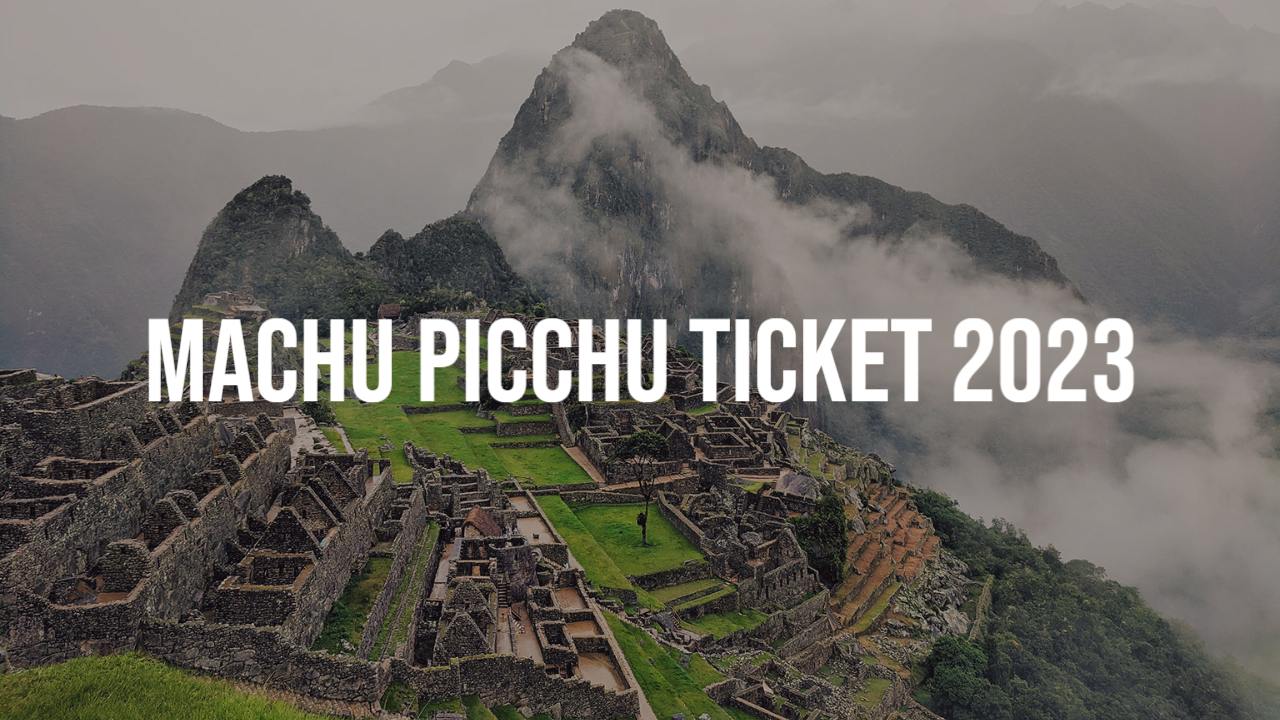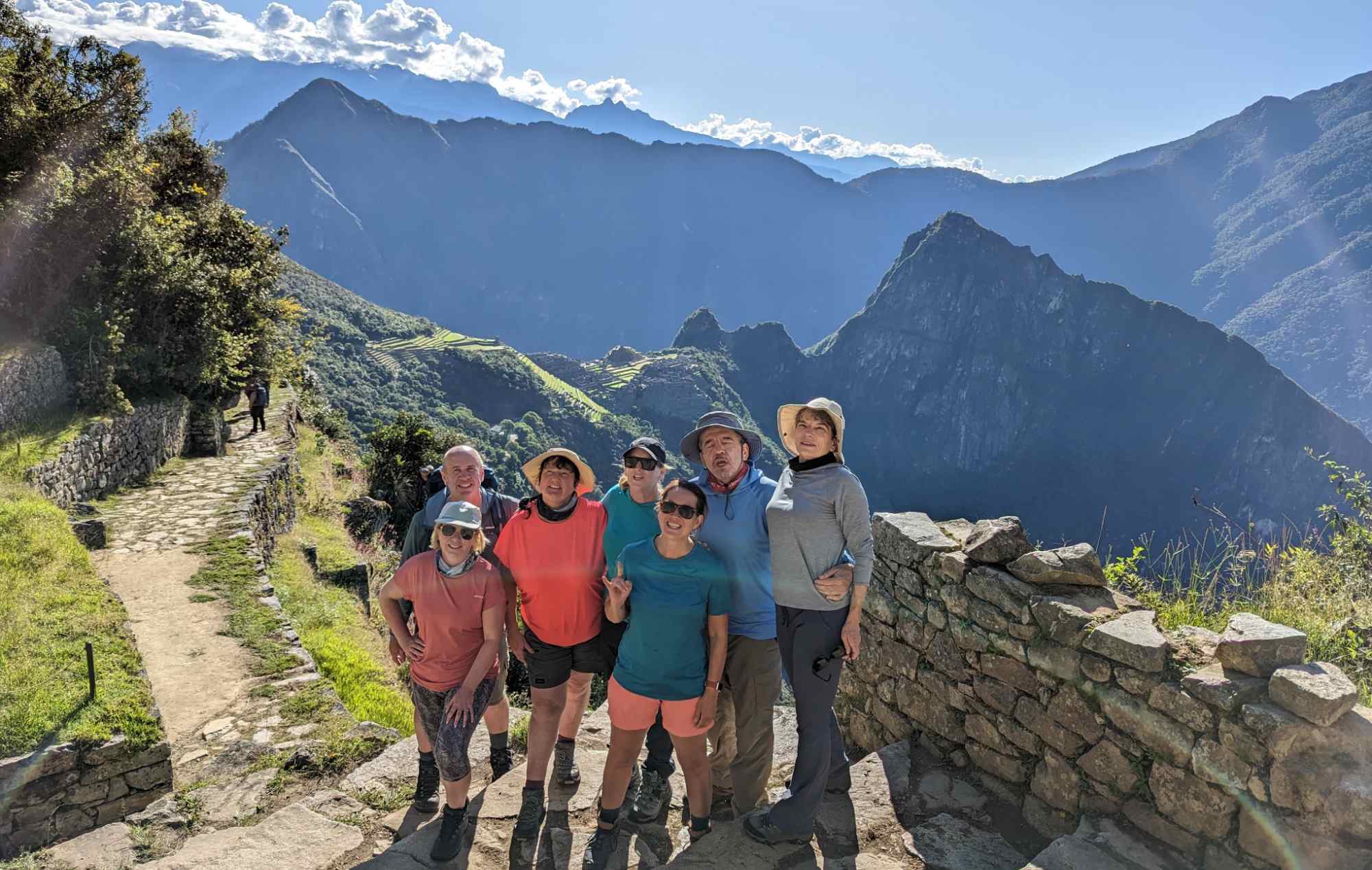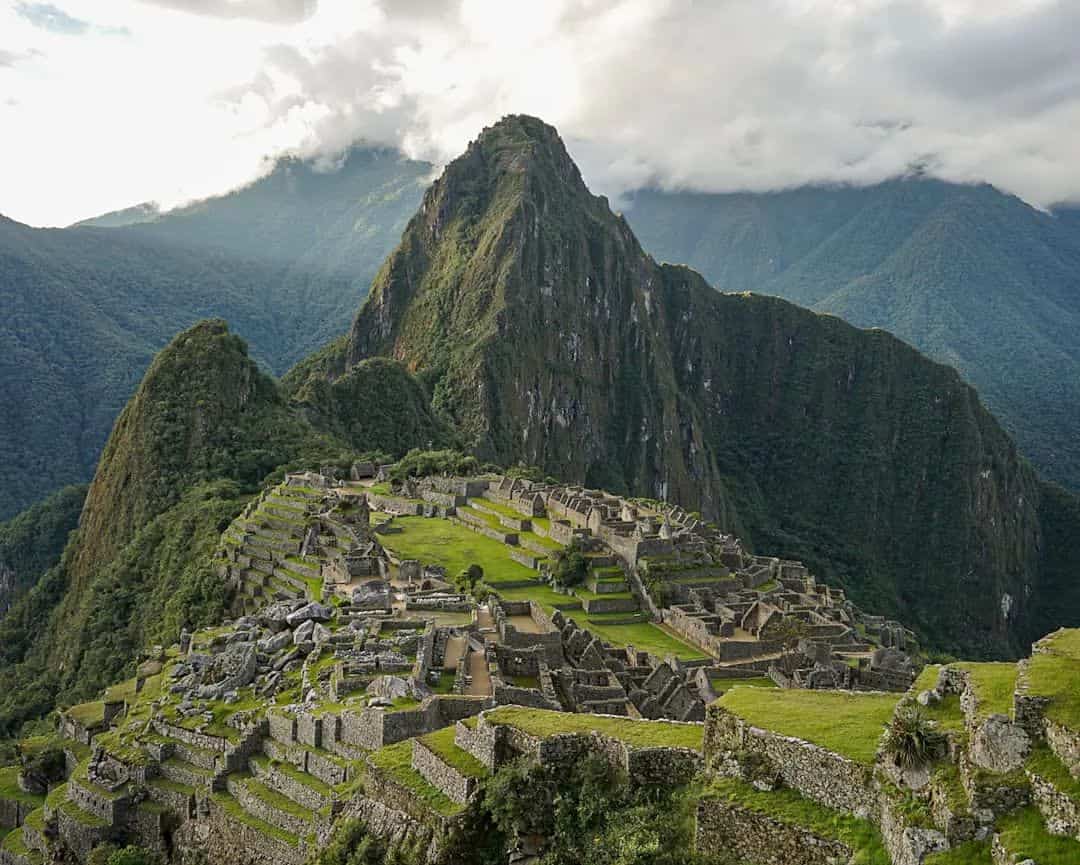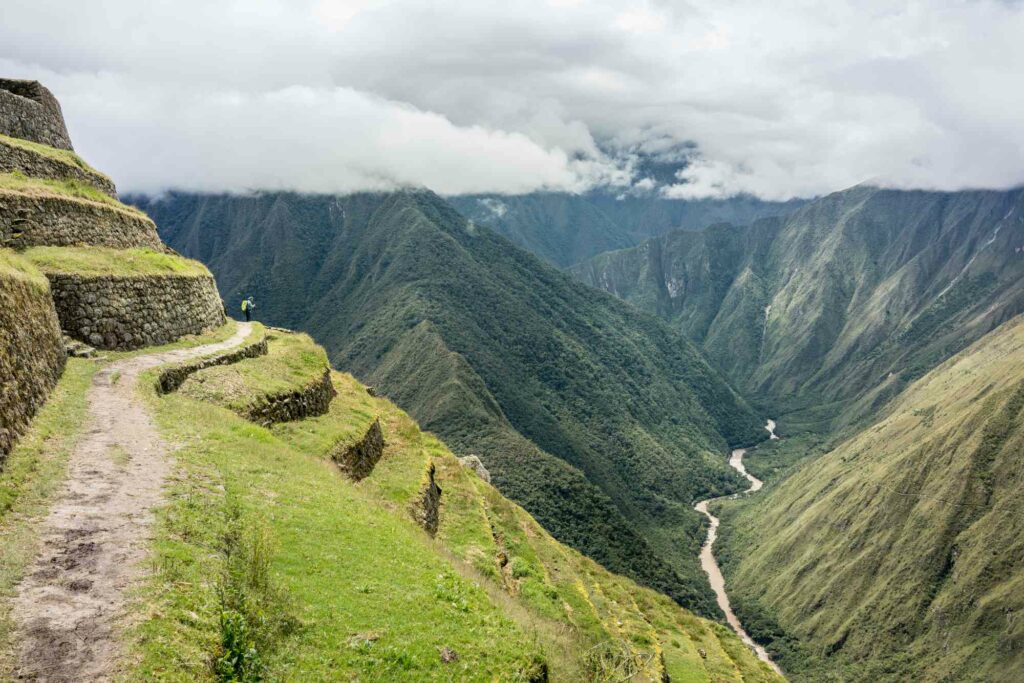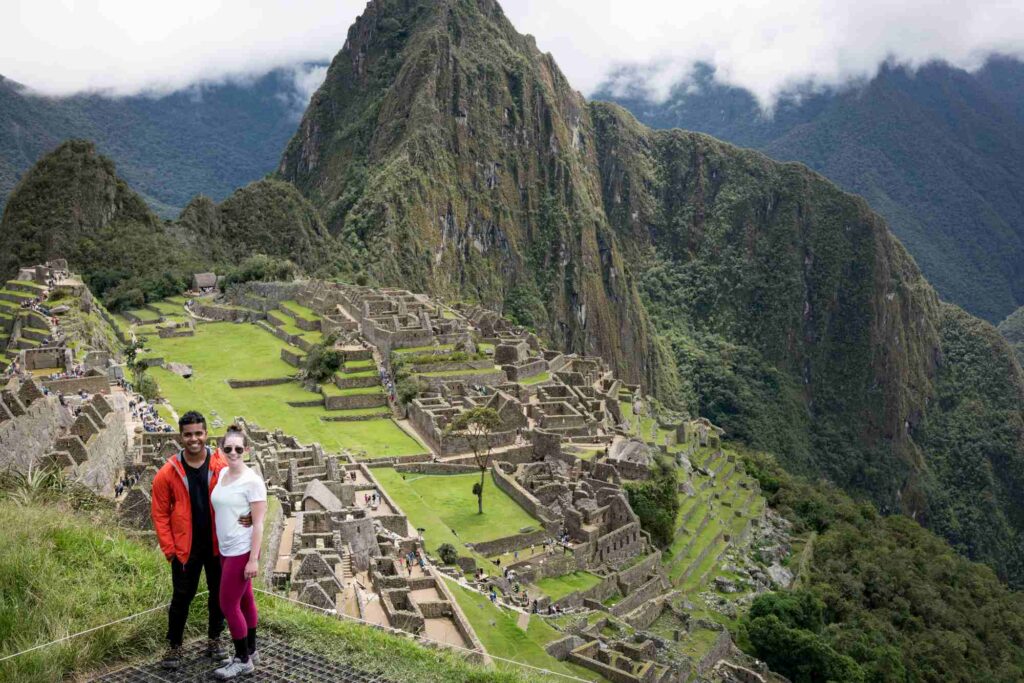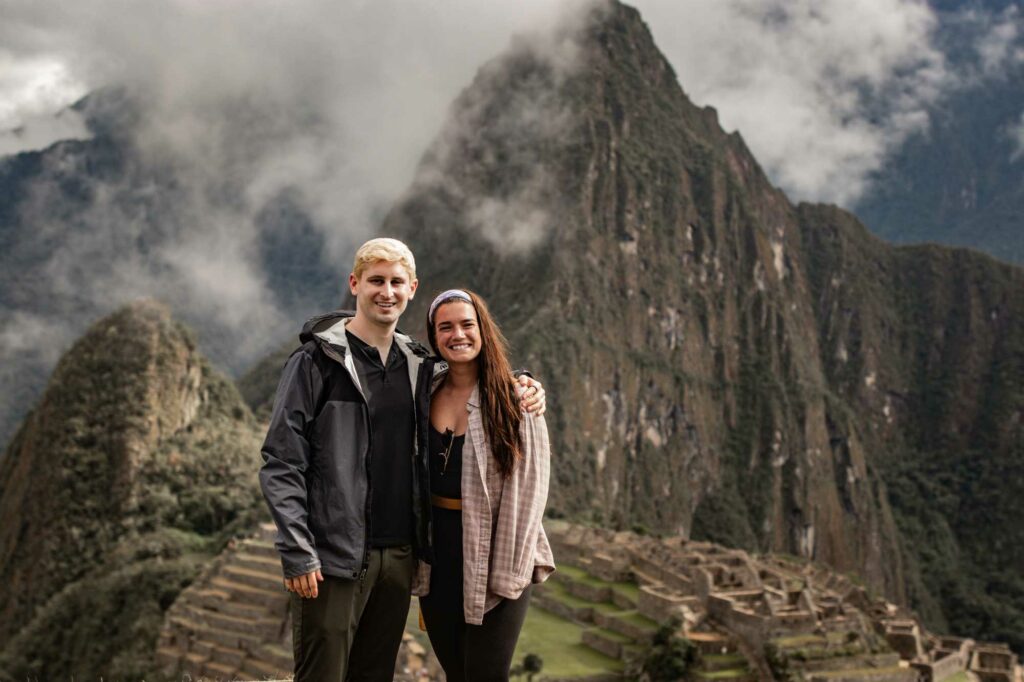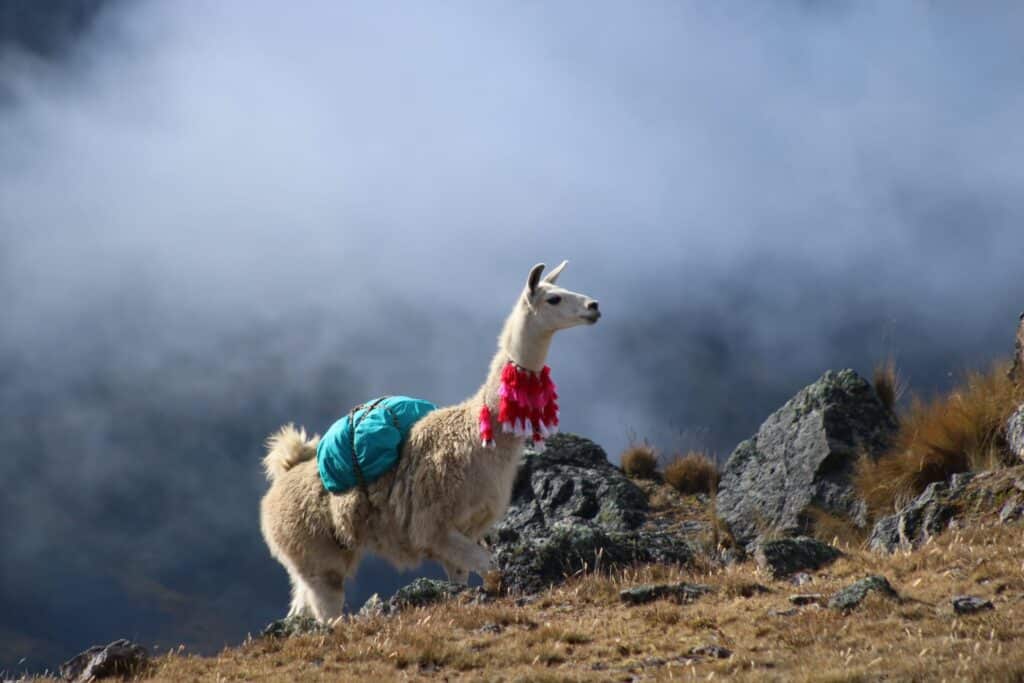Amazing Facts About Machu Picchu
Machu Picchu is an ancient Incan site located in the Cusco Region of Peru. It is often called the “Lost City of the Incas.” Machu Picchu was built in the 15th century and was abandoned just 100 years later, at the time of the Spanish Conquest. Today, Machu Picchu is one of the most popular tourist destinations in South America! Here are some amazing facts about Machu Picchu:
Each Machu Picchu fact takes the form of an FAQ.
Facts about Machu Picchu
Where is Machu Picchu located?
Machu Picchu is located in the Cusco Region of Peru, about 50 miles northwest of the city of Cusco. It lies between two mountain peaks, Machu Picchu and Huayna Picchu, at an elevation of 7,970 feet above sea level. The site itself covers over 32 square kilometers and is located in the Sacred Valley of the Incas.
How was Machu Picchu constructed?
Machu Picchu was built by the Inca Empire around 1450 AD and consists of more than 200 structures, terraces, and farming areas. The stones that make up Machu Picchu were cut to fit perfectly together without the use of mortar. This technique, known as “ashlar masonry,” was used by the Incas to construct their cities and allowed them to build structures that were extremely strong and durable.
What was Machu Picchu built for?
Machu Picchu is believed to have been built as an estate for the Inca emperor Pachacuti. It was a spiritual and cultural center that served as the spiritual home for the high priests of the Inca Empire. It was also used as an observatory and religious site, where important ceremonies were held, including festivals of sun worship.
How big is Machu Picchu?
Machu Picchu covers over 32 square kilometers and is located in the Sacred Valley of the Incas. It consists of more than 200 structures, terraces, and farming areas.
What are the Machu Picchu ruins made of?
The stones that make up Machu Picchu were cut to fit perfectly together without the use of mortar. This technique, known as “ashlar masonry,” was used by the Incas to construct their cities and allowed them to build structures that were extremely strong and durable.
Who discovered the Machu Picchu ruins?
Machu Picchu was rediscovered by Hiram Bingham in 1911. Since then, it has become a popular tourist attraction and a UNESCO World Heritage Site.
What can visitors see at Machu Picchu?
Visitors to Machu Picchu can explore the ancient city, including its palaces and temples, plazas, terraces, and farming areas. Visitors may also climb Huayna Picchu for a spectacular view of the site from above or take a hike along the Inca Trail. There are also many other activities available, such as zip-lining, mountain biking, and rafting. Additionally, visitors can learn about the rich history of Machu Picchu and its significance to the Incan people through guided tours or by exploring the museum onsite. The site is truly a fascinating.
What are the main ruins at Machu Picchu?
The main ruins at Machu Picchu include the Temple of the Sun, the Intihuatana Stone, and the Room of Three Windows. Other notable sites include the agricultural terraces, plazas, and palaces. These structures are a testament to the Inca’s incredible engineering feats and showcases their mastery of stone-cutting techniques.
Inti Watana (Intihuatana)
Inti Watana is a ritual sacred stone that the Incas used to connect with the stars, moon and sun. It was also believed to be an astronomical clock or calendar.
Temple of the Sun
This temple was dedicated to Inti, the god of the sun, and it was believed that this temple served as a spiritual center for the Inca Empire.
Room of Three Windows
This room was used by the high priests to prepare for important ceremonies and festivals, such as sun worship. It is believed that this room was used to observe the stars and planets.
Inti Mach’ay
This cave was used for rituals and ceremonies, as well as to watch the sunrise during solstice celebrations.
The agricultural terraces
These are some of the most impressive features of Machu Picchu, and it is believed that they were used to grow food for the city and its inhabitants.
In addition to these main ruins, there are many other structures and plazas to explore at Machu Picchu. Visitors can also enjoy the breathtaking views of the Andes Mountains from the terraces or take a hike along one of the many trails that lead up to the site. Machu Picchu is truly a magical place and an incredible reminder of the Incan people’s engineering prowess. It is an experience that no one should miss.
When Was Machu Picchu Discovered?
Machu Picchu was “discovered” in 1911 by the American explorer and historian Hiram Bingham. However, it is believed to have been inhabited as early as the 15th century and had already been abandoned by the time Bingham arrived. Since then, Machu Picchu has become a popular tourist destination and UNESCO World Heritage Site.
In 1911, explorer and historian Hiram Bingham set out in search of the lost Inca city of Vilcabamba. After weeks of searching, he came across an abandoned mountain stronghold known as Machu Picchu. Although it had been abandoned by its original inhabitants centuries earlier, the site was well-preserved due to its remote location high in the Andes Mountains. Bingham quickly realized that this was the ancient city he had been searching for and declared it to be the lost Inca Empire of Vilcabamba. Since then, Machu Picchu has become one of Peru’s most popular tourist attractions and an important part of South American history.
Machu Picchu is an awe-inspiring site that has captivated the imaginations of visitors for centuries. It stands as a testament to the engineering prowess of the Incan Empire and serves as a reminder of its rich cultural heritage. With its breathtaking views, fascinating ruins, and unique history, it’s no wonder Machu Picchu remains one of the most popular tourist destinations in South America. Visitors can explore the site on their own, or take a guided tour to learn more about its rich history and significance to the Incan people. Either way, it’s an experience that should not be missed!
Why was Machu Picchu important?
Machu Picchu was an important religious and political center for the Incas. It served not only as a spiritual home for the high priests of the Inca Empire, but also held great political and economic significance in terms of trade routes, agricultural production, and communication between different parts of the empire. It is also an incredible example of the Inca’s engineering prowess, showcasing their mastery of stone-cutting techniques and sophisticated urban planning. Today, Machu Picchu is one of the most iconic and recognizable sites in Peru.
The Crown Jewel Of Incan Civilisation
Machu Picchu is an iconic archaeological site located in the Peruvian Andes Mountains. It was built by the Inca Empire, a powerful pre-Columbian civilization that was once one of the largest empires in South America. The site has a highly sophisticated drainage system, agricultural terraces and temples dedicated to their ancient gods and goddesses. Its architecture and landscape make it one of the most visited tourist destinations in South America. Machu Picchu’s incredible beauty has captivated visitors for centuries, and its archaeological significance is unparalleled.
The Inca Empire was built on a foundation of precision engineering and their ingenuity is clearly evident at Machu Picchu. The site is an impressive blend of terraces, temples and dwellings. Each structure was carefully planned and constructed with precision to create a harmonious balance between nature and the built environment. Machu Picchu was also home to important ceremonies and festivals, such as sun worship. It is believed that this room was used to observe the stars and planets.
The most famous stretch of the Incan pathway is the Inca Trail to Machu Picchu. This ancient network of trails was used by the Incas to move goods and people across their vast empire. The Inca Trail is a unique trek through stunning landscapes, towering mountains and lush rainforests. It leads to the iconic ruins of Machu Picchu, which are considered to be one of the most spectacular sights in South America.
An Icon Of Peru’s Cultural Heritage
Most of Peru’s people descended from the Incas, so Machu Picchu holds a special place in the country’s cultural heritage. It is one of Peru’s biggest attractions and its image has become an iconic symbol of the country. The site has been declared a UNESCO World Heritage Site in 1983, highlighting its importance to human history.
Machu Picchu stands as a reminder of the Inca civilization’s brilliance and innovation. Its incredible architecture, stunning landscape, and unique history make it a must-see destination for anyone visiting South America. From its remarkable engineering feats to its spiritual significance, Machu Picchu is an awe-inspiring site that everyone should experience at least once in their lifetime.
- Sacred Valley day tour
- Rainbow Mountain day trip
- Humantay Lake day tour
- Machu Picchu day tour
When was Machu Picchu abandoned?
Machu Picchu was abandoned by the Incas around 1572 AD, at the time of the Spanish Conquest. The site remained largely unknown until 1911 when it was rediscovered by Hiram Bingham. Since then, it has become a popular tourist attraction and a UNESCO World Heritage Site.
Machu Picchu was abandoned to evade the Spanish
Machu Picchu is widely believed to have been built by the Inca Emperor Pachacuti between 1450 and 1480. Its purpose was likely religious, as there are several temples dedicated to ancient gods throughout the site. When the Spanish colonized Peru in 1532, the Incas were forced to abandon Machu Picchu for fear of being discovered. The site remained hidden until the early 20th century when it was rediscovered by American explorer Hiram Bingham.
Today, Machu Picchu remains one of the most important archaeological sites in South America and continues to be a source of fascination for visitors from around the world. Its stunning views, fascinating ruins and spiritual significance make it an unforgettable experience. Whether you’re standing in the ruins or taking a guided tour, Machu Picchu is sure to leave you with a profound appreciation for the Incan Empire.
How do you pronounce Machu Picchu?
Machu Picchu is pronounced “mah-choo pee-choo”. It is also sometimes referred to as Machu Pikchu, with both versions being accepted. The word itself is derived from the Quechua language and means “old mountain”. The name has come to symbolize the importance of this ancient site to the people of Peru and to all of South America. Machu Picchu is a special place that deserves to be explored and appreciated by everyone.
Did Machu Picchu have a name change?
No. Machu Picchu has not had a name change. The site was originally known as “Picchu” before Hiram Bingham, who re-discovered it in 1911, coined the full name of Machu Picchu, this is according to a recent paper in the Journal of the Institute of Andean Studies. The word itself is derived from the Quechua language and means “old mountain”. The name has become iconic and is widely used to refer to the site today. This ancient city of Peru remains an awe-inspiring reminder of what could be achieved by a civilization without modern technology. It is a must-see for anyone wanting to experience the history and culture of South America.
What Does Machu Picchu Mean?
Machu Picchu means “old mountain” in Quechua, the language of the Inca Empire. The name was likely given to it by the Incas themselves and has since come to symbolize the importance of this site to Peru and South America as a whole. Machu Picchu stands as a reminder of the incredible achievements of the pre-Columbian civilization and of its lasting legacy. The site is widely recognized as one of the most important archaeological sites in the world and continues to draw visitors from around the globe. Whether you’re standing in the ruins or taking a guided tour, Machu Picchu is sure to leave you with a sense of wonder and appreciation. It is a must-see destination for anyone visiting South America.
What does the landscape of Machu Picchu look like?
Machu Picchu is situated on the eastern slopes of the Andes Mountains, 7,970 feet (2,430 meters) above sea level. The site consists of terraced fields, ceremonial plazas, temples and dwellings built on the sides of a steep mountain. The city is surrounded by lush vegetation that includes Inca remains such as terracing, irrigation systems and agricultural structures. The most iconic feature of Machu Picchu is Huayna Picchu, a sharp peak that towers over the valley below.
Facts about visiting Machu Picchu
Why visit Machu Picchu?
Machu Picchu is an iconic site and a must-see destination for anyone visiting South America. It offers breathtaking views, fascinating ruins and spiritual significance that will leave you with a profound appreciation for the Incan Empire. The city was built on the side of a steep mountain and surrounded by lush vegetation. Visitors can take in the stunning vistas from Huayna Picchu or explore the ruins below. It is an unforgettable experience that will stay with you for a lifetime.
Trekking to Machu Picchu is a popular option for visitors who want to experience the site in its natural environment. Most trekkers take between four and seven days to complete their journey, depending on the difficulty of the route they choose. It is important to be aware of altitude sickness before setting off and to carry plenty of water, food and supplies. Along the way, you will pass through scenic landscapes and ruins that are sure to leave a lasting impression. The experience culminates in the arrival at Machu Picchu itself, where you can marvel at its grandeur and take in the breathtaking views. Despite the challenges involved, a trek to Machu Picchu is an adventure that you will never forget.
You may also like: Best time to visit Machu picchu
How many people visit Machu Picchu?
Machu Picchu is one of the most visited sites in South America, with over 1.7 million visitors in 2018 alone. It is estimated that approximately half of these visitors are foreign tourists and the other half domestic Peruvian tourists. The influx of tourists has led to some concerns about overcrowding, but measures have been taken by local authorities to limit the amount of visitors allowed in the park at any one time.
The World Monuments Fund placed Machu Picchu on their 2008 Watch List of the 100 Most Endangered Sites in the world due to the impact of tourism on the city ruins and the development and encroachment of the town of Aguas Calientes in the valley below Machu Picchu. Despite this, Machu Picchu remains a popular destination and continues to draw visitors from around the world.
Is it worth getting a registered Machu Picchu guide?
Though it is not mandatory, hiring a registered Machu Picchu guide can be beneficial for visitors who want to maximize their time at the site. A knowledgeable guide can provide valuable information about the history of Machu Picchu and the Inca Empire as well as tips on where to go and what to see. They will also be able to answer any questions you have and provide assistance if needed. Hiring a guide is well worth the cost, as it will make your visit to Machu Picchu that much more enjoyable and memorable.
You may also like: If you plan to trek to Machu Picchu, there are several books or blogs that can help prepare you for the journey. The following blogs titles will provide invaluable advice on everything from packing and planning to navigating the various routes and dealing with altitude sickness: “Hiking Machu Picchu: A Step-by-Step Guide”
Is Machu Picchu open all year round?
Machu Picchu is open 365 days of the year round, between 6 am and 5:30 pm. The best time to visit Machu Picchu is between April and October, when the weather is milder and more conducive to trekking.
You need to book your ticket in advance
Because of the large number of visitors and the limited space available, it is important to book your ticket in advance. Tickets can be purchased online or at the entrance of the sanctuary. It is also possible to purchase tickets for a specific time slot in order to guarantee entry. Planning ahead will ensure that you have enough time to explore Machu Picchu and maximize your time in the park. All visitors must also carry valid identification with them when visiting Machu Picchu. This can be a passport, national ID card, or any other form of government-issued photo identification.
There are different circuits at Machu Picchu
Machu Picchu offers several different circuits that allow visitors to explore the site in depth. The most popular circuit is the classic circuit, which takes travelers on a two-hour walk around some of the main attractions of Machu Picchu such as the Intihuatana (sun dial), Temple of the Sun and Great Hall of Windows. Other circuits offer more intensive hikes, taking visitors to the Inca Trail and other remote areas of Machu Picchu. Depending on your time and interests, it is possible to customize your own route around the site. Whichever circuit you choose, be sure to take in all that Machu Picchu has to offer!
- Sacred Valley day tour
- Rainbow Mountain day trip
- Humantay Lake day tour
- Machu Picchu day tour
How to get to Machu Picchu?
The most popular way to get to Machu Picchu is by taking the PeruRail train from Cusco or take a private transfer to Ollantaytambo and then a train to Aguas Calientes. The journey takes approximately four hours and there are several options when it comes to tickets, including first-class and economy. Once you arrive at the station of Aguas Calientes, you can take a shuttle up to Machu Picchu. If you prefer to explore the area by foot, there is a four-hour hike known as the Inca Trail which takes travelers through some of the most remarkable landscapes in South America.
The most famous of all of these is the Inca Trail is a four-day trek and the short Inca Trail 2 day through some of the most spectacular landscapes in South America. The trail winds its way up to the ruins of Machu Picchu, passing through lush cloud forests andThe most famous of all of these is the Inca Trail is a four-day trek through some of the most spectacular landscapes in South America. The trail winds its way up to the ruins of Machu Picchu, passing through lush cloud forests and remote villages along the way. As it follows part of an ancient roadway used by the Incas centuries ago, it offers a unique insight into the past. remote villages along the way. As it follows part of an ancient roadway used by the Incas centuries ago, it offers a unique insight into the past.
Can you trek to Machu Picchu?
Yes, you can trek to Machu Picchu. The most popular route is the Inca Trail, which takes approximately four days and covers some of the most spectacular scenery in South America. The trail winds its way up to the ruins of Machu Picchu, passing through lush cloud forests and remote villages along the way. As it follows part of an ancient roadway used by the Incas centuries ago, it offers a unique insight into the past. The trek requires physical fitness and is best attempted between May and September during Peru’s dry season.
The classic Inca Trail 4 day trek is the most popular of these, however there are numerous alternate routes for those who prefer a more relaxed or varied experience. For example, the Salkantay Trek takes you along an ancient Incan road and offers spectacular views of snow-capped mountains and lush jungle landscapes. The Lares trek is another great option for those looking to explore remote communities and Machu Picchu in a shorter amount of time.
Whichever trek you choose, be sure to bring plenty of water, snacks and comfortable clothing. Planning ahead will ensure that you have enough time to explore Machu Picchu and maximize your experience in the park. With its rich history, breathtaking views and many fascinating attractions.
The most popular alternative trail to Machu Picchu is the Salkantay Trek, Lares trek, Choquequirao trek, Huchuy qosqo trek. This routes takes you along an ancient Incan road and offers spectacular views of snow-capped mountains and lush jungle landscapes.
When is the best time to trek to Machu Picchu?
The best time to trek to Machu Picchu is during Peru’s dry season which runs from May through September. During this period the temperatures are cooler and there is less chance of rainfall, making it more comfortable for hikers.
It is important to note that the Inca Trail closes each year in February for maintenance and reopens in March. Therefore, it is best to plan your trek for a period before February or after March.
If you choose to hike the Salkantay Trek or Lares Trek instead of the Inca Trail, then you do not need to worry about permit restrictions and can plan your trek during any time of the year. It is still advised to check the weather forecast and plan accordingly.
No matter when you decide to trek, make sure that you come prepared with enough water, snacks and comfortable clothing. Planning ahead will ensure that you have enough time to explore Machu Picchu and maximize your experience in the park. For full details, check out our article on the best time to hike to Machu Picchu.
Does it snow in Machu Picchu?
Machu Picchu has a subtropical climate, meaning that it does not experience snowfall. The temperature in the area varies depending on altitude, with temperatures ranging from highs of 30°C to lows of 1°C.
Conclusion
Machu Picchu is a beautiful and mysterious place that offers an unforgettable experience for all its visitors. Whether you choose to explore by train, foot or bus – be sure to prepare yourself with the right knowledge and equipment before embarking on your journey. With its rich history, breathtaking views and many fascinating attractions – Machu Picchu is sure to be an unforgettable destination.

Travel New Posts
Machu Picchu Tickets 2024
Inca Trail 1 day Trek
The Inca Trail 2024: A Complete Guide


